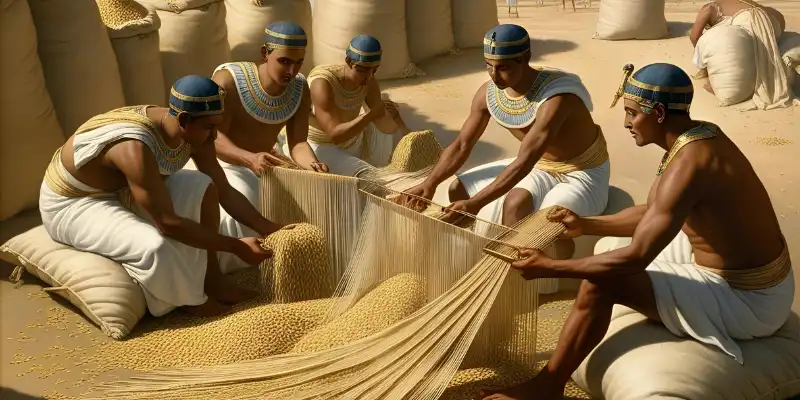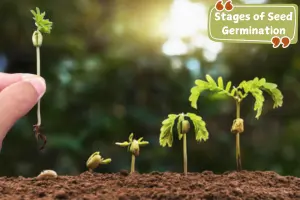The Untold History of Flax Seeds: And Their Ancient Uses
Published: 25 Mar 2025
Welcome, history lovers!
When did flax seeds first become a part of human civilization? The history of flax seeds dates back over 9,000 years, when ancient cultures used them for food, medicine, and making linen fabric. The Egyptians wrapped mummies in flax-based linen, while the Mesopotamians cultivated flax as a staple crop. Even today, the history of flax seeds continues to shape agriculture and nutrition worldwide.
I’m Sheila, a botany expert with seven years of experience in plant research. In this article, we’ll explore the history of flax seeds—from their ancient origins to their modern-day importance in health and industry.

By the end, you’ll gain a deep understanding of flax seeds’ history and why they remain valuable today.Let’s explore their rich history and discover how you can benefit from this ancient wonder today!
History of Flax Seeds
Flax seeds were essential to early agriculture and daily life for thousands of years. Ancient civilizations didn’t just grow flax for food—they used it to create strong fabrics, medicinal remedies, and even religious offerings. The journey of flax seeds through time shows how valuable this tiny seed has always been.
Flax in Ancient Mesopotamia
Mesopotamia, often called the “Cradle of Civilization,” was the first region to cultivate flax around 9,000 years ago. Farmers in this fertile land grew flax for its stiff fibers, which were woven into linen—a reward fabric for clothing.
They also ate flax seeds, recognizing their rich nutritional benefits long before modern science confirmed them. In a way, flax was their version of a multi-purpose tool, just like how we use it today for both health and industry.
From the fields of Mesopotamia to today’s superfood shelves, the journey of flax seeds proves that nature’s wisdom stands the test of time.Hippocrates
Flax Seeds in Ancient Egypt
The Egyptians advanced the cultivation of flax. They wove flax fibers into fine linen, which became a symbol of purity and wealth. Pharaohs and priests wore linen garments, and even mummies were wrapped in flax-based cloth for preservation.
Flax seeds were also a dietary staple, often ground into flour or mixed with honey. As someone who has studied ancient plant uses, I find it fascinating how the Egyptians understood flax’s dual purpose—just like how we now use it for nutrition and textiles.

Flax in China and India
Thousands of miles away, ancient China and India added flax seeds for their healing properties. Traditional Chinese medicine uses flax seeds to aid digestion and promote overall health, while in India, herbal medicine specialists value them for their ability to balance the body’s energy.
Even today, flax seeds remain essential to Indian diets, often added to flatbreads and herbal remedies. The history of flax seeds unites numerous cultures, demonstrating that beneficial things endure over time.
What Are Flax Seeds?
Flax seeds may be tiny, but they have played a massive role in nutrition and agriculture for thousands of years. These nutritious seeds have been grown worldwide for food and fiber. Their long history and incredible benefits make them valuable to modern diets.
Benefits
- Flax seeds are about the size of a sesame seed and have a smooth, shiny surface. They come in two primary colors—golden and brown—but contain essential nutrients like omega-3 fatty acids, fiber, and protein.
- A tablespoon of flax seeds provides a significant amount of daily fiber, making them a powerhouse for digestion and heart health.
The history of flax seeds reminds us that some of the oldest remedies are still the most powerful.King Charlemagne
Personal Experience: I remember adding them to my morning smoothie for an extra nutritional boost, and they always improved my energy levels!
Where Do They Grow?
- Flax seeds have been cultivated for over 9,000 years in regions with cool climates. Historically, Mesopotamia, Egypt, and China were among the first to grow flax for food and textiles.
- Today, major producers include Canada, Russia, India, and the United States. Flax has been an important crop since ancient times, and farmers worldwide still grow it today—just like a strong tree that stands tall for years!
| Trivia Facts About Flax History |
|---|
|
Conclusion
The history of flax seeds is a testament to their constant value from ancient civilizations to modern times. These tiny seeds have nourished people for thousands of years. Flax has endured over time, whether used for food, medicine, or textiles.
From my experience, adding flax seeds to my daily diet has improved digestion. I recommend incorporating them into smoothies, yogurt, or baked goods for a simple health boost.
If you want to learn more about flax seeds and their benefits, add them to your meals today—your body will thank you!
Frequently Asked Questions
Flax seeds have existed for thousands of years, and their benefits continue to spark curiosity. Here are some common questions beginners, students, and gardeners might have after learning about the history of flax seeds.
Flax seeds are used in food, medicine, and textiles. They have omega-3 fatty acids, fiber, and protein, which benefit heart health and digestion. People also use flax seeds in baking, smoothies, and skincare products!
Flax seeds were first cultivated in Mesopotamia over 9,000 years ago. Ancient civilizations, including Egypt, China, and India, grew flax for food and textiles. It later spread to Europe and North America and remains an important crop today.
Yes! Flax seeds have dietary fiber, which helps keep the digestive system healthy. They promote regular bowel movements and may help prevent constipation when consumed with enough water.
Ancient Egyptians used flax seeds for food and pressed them for oil while weaving flax fibers into linen. In India and China, flax was valued in traditional medicine for its healing properties. These civilizations recognized flax as both a nutritious food and a helpful resource.
Flax seeds support heart health, aid digestion, and provide plant-based omega-3 fatty acids. They also have antioxidants that help reduce inflammation in the body. Regular consumption can improve skin, hair, and overall well-being.
| Reference Sources |
|---|
|

- Be Respectful
- Stay Relevant
- Stay Positive
- True Feedback
- Encourage Discussion
- Avoid Spamming
- No Fake News
- Don't Copy-Paste
- No Personal Attacks

- Be Respectful
- Stay Relevant
- Stay Positive
- True Feedback
- Encourage Discussion
- Avoid Spamming
- No Fake News
- Don't Copy-Paste
- No Personal Attacks





